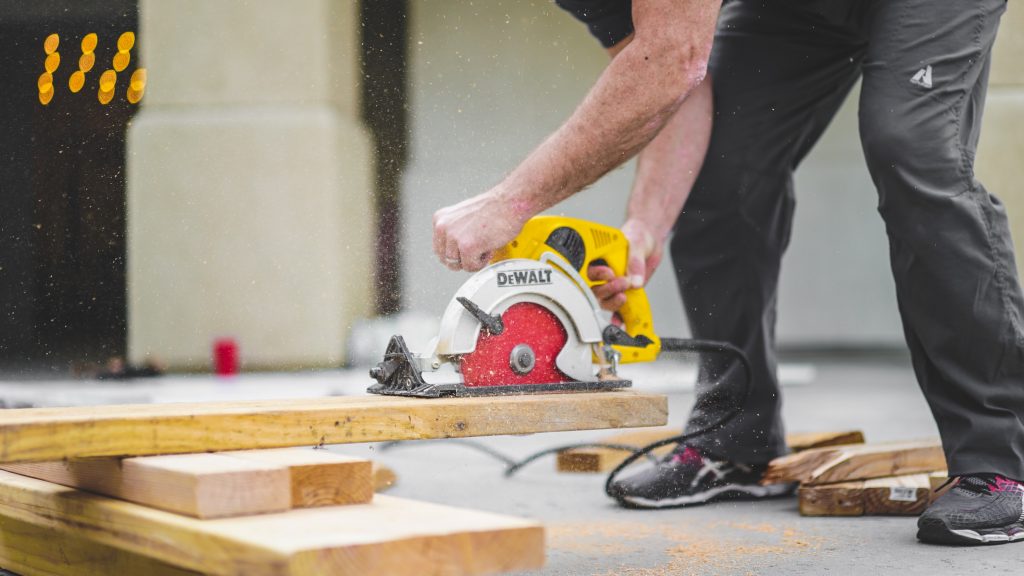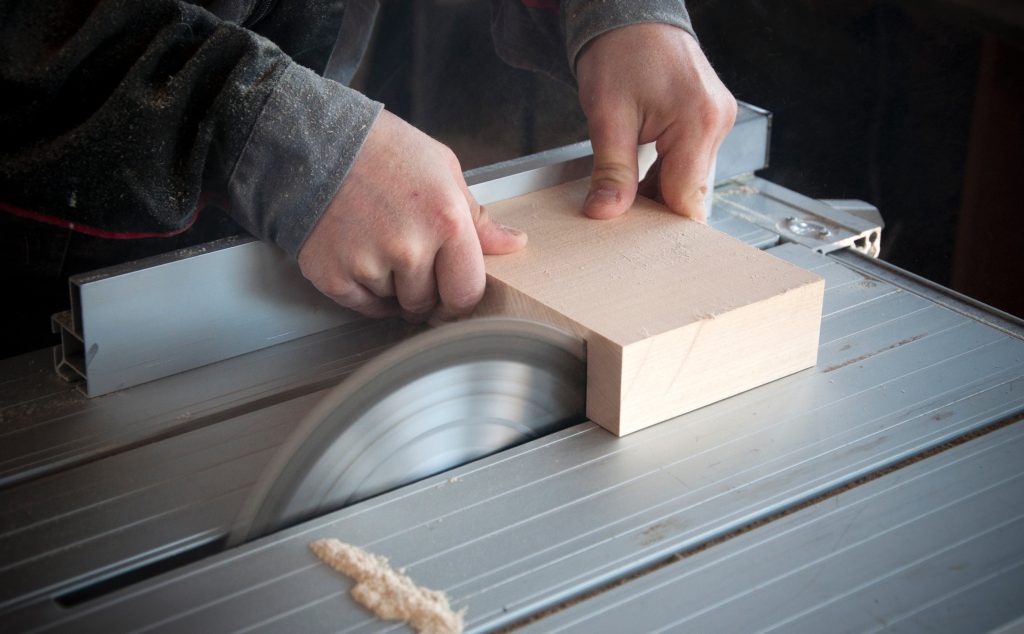
Noise induced hearing loss (NIHL) is common among many trades and carpentry is no exception. Although one severely loud noise event can cause permanent hearing loss, NIHL usually builds slowly over years of excessive exposure to loud noise. Because NIHL it is gradual, often taking years for symptoms to show, most carpenters may not realize anything is wrong until it’s too late. The truly devastating fact it is that once the inner ear is damaged, it is permanent and can only be treated and not reversed.
A 25-year old carpenter is likely to have the ears of 50-year old person who has not been exposed to noise.
National Institute for Occupational Safety and Health (NIOSH)
Beyond Noise Induced Hearing Loss
When we think of loud noises, we often stop at hearing loss. The fact of the matter is that loud Noise has numerous adverse health effects including irritability and even hypertension. In addition to NIHL and health effects, a condition known as Tinnitus often goes hand in hand with hearing loss. Tinnitus is described as hearing sounds in one or both ears when none are present. The “phantom sounds” are often described as ringing, clicking, hissing, buzzing or roaring noise in the ear, either continuous or sporadic, loud or soft.
Tinnitus can not be reversed but it can be treated.
The Scope of The Problem
Over 30 million workers across the U.S. & Canada are exposed to dangerous noise levels – many without realizing it. The Canadian job-bank shows 124,900 people employed as carpenters and the filed is growing. More than half of workers studied between 1996 and 2010 experienced significant abnormal hearing loss due to noise. The construction industry saw the second highest number of workers exposed to noise hazards with manufacturing being the first.
Noise is like sunshine. Both become more hazardous as intensity and duration of exposure increase.

Noise Hazards in Construction
Most provinces across Canada consider the threshold for hearing protection being required as anything over a regular 8-hour day averaging 85 dBA. Because noise exposure is measured by the total time versus severity, the greater the noise level the lower the amount of time a worker can be exposed to it. This means that a noisy 100 dB jackhammer can cause permanent hearing damage in just one hour. And if one noise event is loud enough, permanent damage can occur immediately.
One loud extremely loud sound, such as a powder-actuated nail gun, can cause immediate permanent hearing loss when used without hearing protection.
According to John Reczek, a journeyman carpenter and MB Regional Manager of the Prairie Arctic Regional Council of Carpenters, Drywallers, Millwrights, and Allied Workers (PARC), the “overall ambient noise levels of a construction site add significantly to the total noise exposure” carpenters are exposed to. The ambient noise consists of generators, air compressors and a variety of tools being used nearby the workers’ exposure can easily exceed 85dB across an 8-hour day. Then add on exposure to the noisy equipment we often associate with construction that is used throughout the day, and it’s easy to see why carpentry often in top noisiest jobs lists. Some noise levels generate by equipment:
- Skill saw – 110 dBA
- Chop saw – 105 dBA
- High speed drills – 100+ dBA
- Belt Sander – 105 dBA
- Powder-actuated fastening guns – 130 dBA
- Air nail guns – >100 dBA
- Jackhammer: 100 dBA
- Chain saw: 110 dBA
- Hammer drill: 115 dBA
*Note that a 3 dB difference means the sound levels generated double.
One item John Reczek brought to our attention, was that tools like the powder-actuated tools, have a concussive effect that you physically feel. That’s a serious warning about the damage they can do. He also suggested that depending on which hand a carpenter uses, would determine which ear was the most damaged. For example, right-handed skill saw operators would invariably have more problems with their right ear as it would be most exposed to the noisy saw.
Hearing Protection On The Job
Carpenters are often exposed to various types and levels of noise with varying duration for much of their workday. Hearing protection needs to be both comfortable and convenient to use. We recommend workers consider solid silicone earplugs that are custom molded to a worker’s ear. They provide all day comfort and 18 dB of hearing protection which is enough to protect and still allow for communication when someone is close by. The next step is to use solid over the ear headsets and in extreme environments, use both in ear plugs and over the ear protection.
“Lots of carpenters have ringing in ears for months after jobs – at least 40% over 45 may have problems“
John Reczek – PARC
The safety trends are getting better. “During the last 10 – 12 years safety overall, including hearing safety has improved greatly.” according to John Reczek. Projects such as COR safety training has become widespread and even small companies will have safety audits and a designated safety officer.
Noise is hazardous if it’s loud enough that you must raise your voice to talk to someone a metre away.
Employers: Ensure Hearing Protection Is Working
Hearing damage, and the symptoms like tinnitus, takes years to develop. That’s why we strongly recommend employers should provide hearing tests at the time of being hired. This protects both the employer and the worker. From there yearly hearing tests for workers routinely exposed to hazardous noise levels should be performed. Yearly hearing tests will help determine if more hearing protection is needed. This can save a carpenter’s hearing and prevent expensive WCB claims for hearing loss.
Signs of Hearing Loss
NIHL usually affects the higher frequencies that represents consonants in perceiving human speech. Individuals with NIHL therefore notice a loss in clarity of perceived speech and have an inability to distinguish particular words. So, if you notice a person getting words such as !!!!!!!!!!!!!!!! or !!!!!!!!!!!!!! mixed up, it’s an advanced sign of hearing loss.
The consequences of hearing loss go beyond impaired communication – it can result in social isolation, anxiety, and poorer job performance.
Although we have noted that occupational hearing loss is gradual, the rate is greatest during the first ten years of exposure. Awareness of the symptoms can help you identify possible damage and take the precautions necessary to reduce future damage. Some more signs of hearing loss include:
- Ringing in your ears (also common are a clicking, roaring, or a pulse).
- Hearing people on the phone is difficult.
- Regular speech sounds like mumbling.
- Difficulty hearing people in a noisy environment like a restaurant (background noise).
- You often ask people have to repeat what they said.
- Speech may sound hollow, muffled or otherwise distorted.
A Simple Self-Test Of Your Hearing Protection
This was an interesting and simple way to check the effect of your workday’s noise exposure on your work. When you arrive at work, turn off the vehicle’s engine and set the radio to a talk radio station with a volume setting just loud enough to hear. Then, at the end of your workday check if you can hear the radio without the engine on. While not the most scientific test, it’s simple and easy to try. Obviously, if you have trouble hearing the radio, you might want to increase your hearing protection and get tested. Over the course of the day your ears will lower their sensitivity a bit to try and protect your hearing. It does come back the next day but eventually it can become permanent hearing damage.
Employers are required to provide workers with the necessary hearing protection equipment.
What to Do If You Suspect You Have Hearing Loss
Your first step is to have a complete hearing evaluation to determine the cause of the hearing loss and or tinnitus. From there a treatment plan can be implemented.
Question About Your Hearing?
We recognize everyone’s treatment needs are unique so if you have any questions about hearing loss or tinnitus, please call us at (204) 788-1083 or contact us online.

